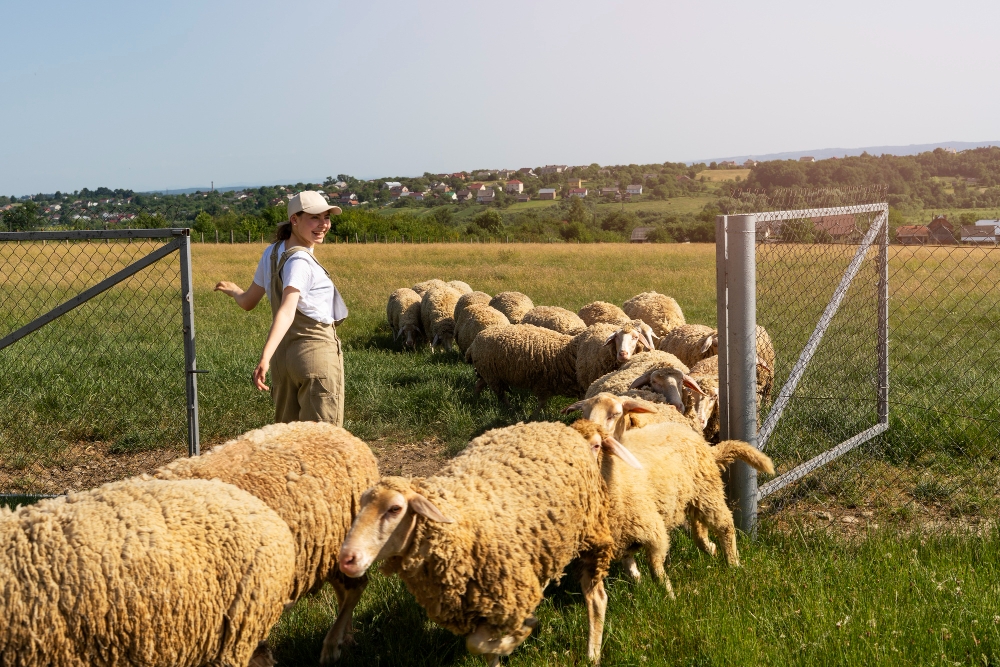
Shearing is a crucial practice that’s important for promoting the good health and hygiene of sheep. The heavy unwanted fleece often lead the sheep to face health-related risks, discomfort, and overheating. Moreover, it can be the breeding ground for parasites like lice, mites, ticks, etc., and deadly microbes that can cause severe pest infestations.
Shearing the sheep once a year helps ensure their proper health and improve the wool quality. But the process is necessarily labor-intensive and stressful. So, preparing for the shearing day at least two months before is important. Even a simple mistake can lead to severe cuts and injuries. Hence, sheep owners and shearers must carefully treat the sheep during the process. Also, they should buy the appropriate shearing accessories online to minimise the chances of massive cuts and injuries.
Common causes of cuts and injuries suffered by sheep
Shearing is undoubtedly a stressful process, which might lead the sheep to suffer from painful wounds around the belly, neck, armpits, hamstrings, and groin. Shearing cuts and injuries can be caused due to:
- l Inexperience of the shearer or sheep owner
- l Inapropriate equipment
- l Time pressure
- l Wrinkles on the skin surface
- l Sudden movement of sheep
The skin wounds which aren’t deeper than 3cm mostly self-heal. However, the wounds which are deeper than 3cm might need to be stitched using extra strong cotton and a needle (single or double curved). By stitching deep skin wounds, you can speed up the healing process. However, you might need to deal with the chances of a wound breakdown.
What is wound breakdown?
It’s the situation when the wound doesn’t heal and causes the sheep to suffer from flystrike or severe infection. In the worst scenario, suffering from such infections and diseases might result in weight loss, decreased productivity, and even fatality. Some of the common causes of wound breakdown are:
- l Poor immune system of the sheep, making it unable to fight against infection because of emaciation and stress
- l Poor stitching technique
- l The sheep’s skin gets infected by dirt and bacteria from the shearer’s needle, wool or environment, and cotton, leading to bacterial infections
Helpful tips for shearing
The shearing process isn’t something you can learn within a few days. It requires the experience to hone your skills and knowledge about the nitty-gritty of this practice. Here are some of the tips you must follow to shear your sheep like a pro.
- Don’t feed the sheep a day before shearing: Sheep with an empty stomach is likely to suffer less discomfort during the shearing process. It means it will create lesser disturbances for the shearer to carry on the task as well.
- Keep the sheep dry: Don’t forget to keep the animals under the shed if there’s a forecast of rainy weather, as if the fleece gets wet before shearing, you may find serious difficulty.
- Follow the necessary biosecurity measures: Hygiene is a key consideration to focus on while shearing the sheep. Always ensure that the blades are disinfected, clean, and function properly. The shearing shed should also be cleaned before starting the process.
The closing thought
Always look for the right helping hands before you shear your sheep. Seek help from the neighbouring shepherds or hire a shearer if you don’t have the relevant knowledge and skills. Also, research thoroughly to buy shearing accessories online of top-notch quality that can make the job easier for you.
We at Shear Quantity have achieved a phenomenal track record in offering advanced shearing accessories at the most competitive pricing rates. Please check our vast range of products now.


You must be logged in to post a comment.
click here to log in